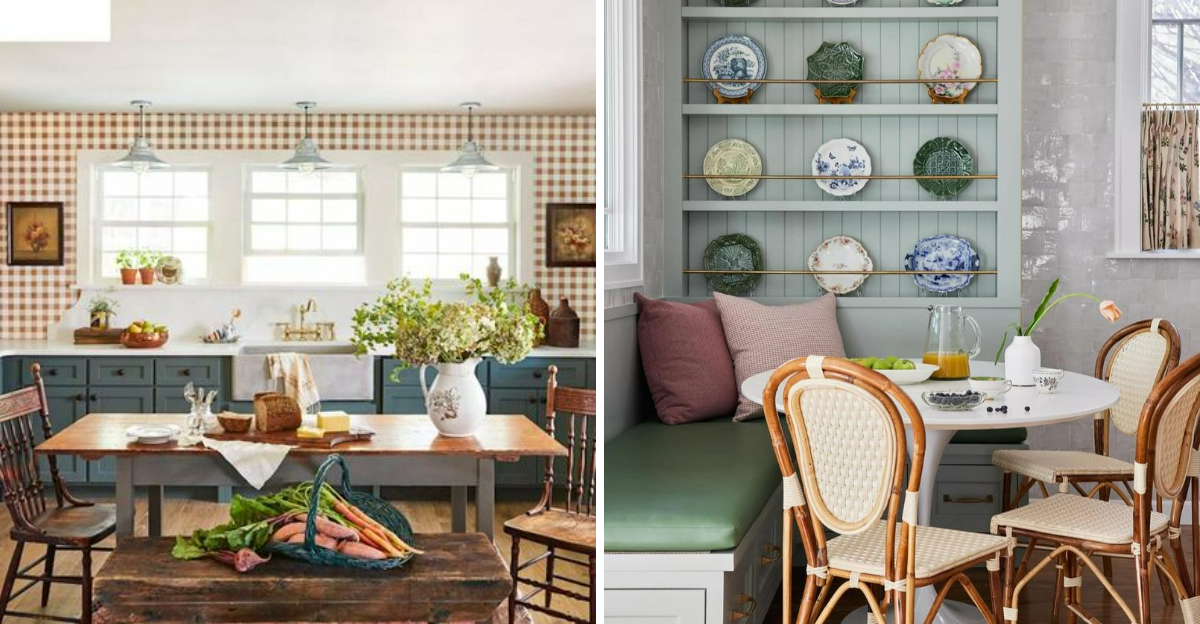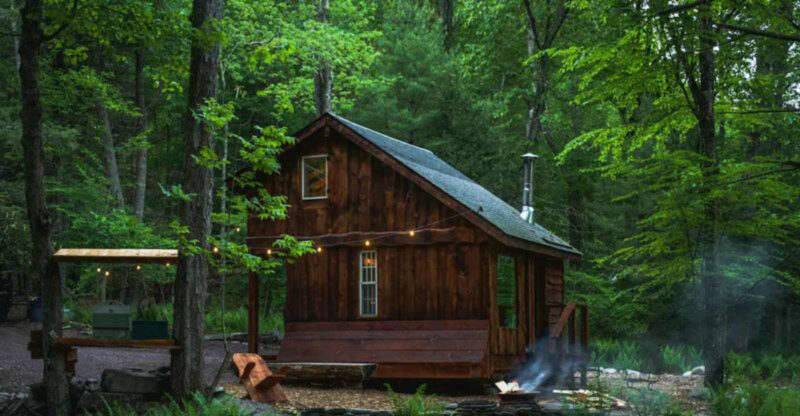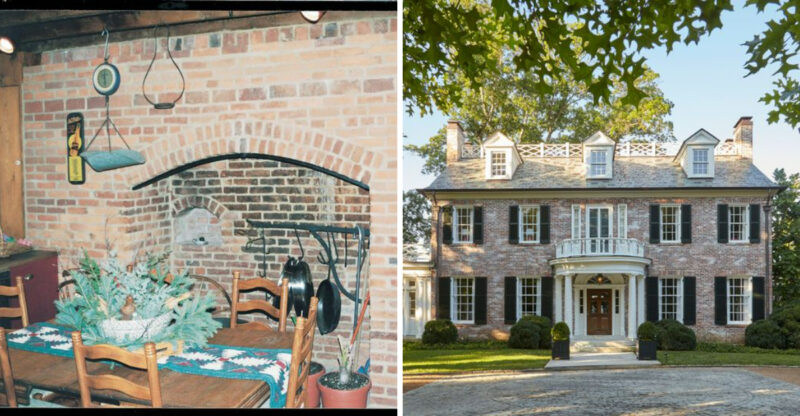Illinois Farmhouses With Kitchens Made For Gathering

Illinois farmhouses have a special charm, especially when it comes to their kitchens. These warm, welcoming spaces were designed for families to gather, cook, eat, and share stories after long days working the land.
From spacious islands to cozy breakfast nooks, these farmhouse kitchens combine practical features with heartwarming touches that make them the true heart of rural Illinois homes.
1. Rustic Wooden Beams Create Warm Atmosphere
Walking into a traditional Illinois farmhouse kitchen often means being greeted by exposed wooden beams overhead. These architectural elements aren’t just structural – they tell stories of the farm’s history through their weathered appearance and natural character.
Many homeowners preserve these original features during renovations, knowing they add irreplaceable warmth. The rich tones of oak, walnut, or reclaimed barn wood create a cozy feeling that modern materials simply can’t replicate.
2. Vintage Apron Sinks Blend Function With Charm
Farmhouse sinks aren’t just a passing trend in Illinois country homes – they’re practical fixtures with deep historical roots. Their generous size once accommodated washing everything from produce to babies, making them essential for busy farm families.
Modern versions maintain the classic apron-front design while offering updated materials like fireclay or stainless steel. The sink’s prominent position encourages conversation while working, as multiple people can gather around during food preparation or cleanup tasks.
3. Open Hearth Fireplaces Provide Gathering Spots
Before central heating, the kitchen fireplace was the beating heart of Illinois farmhouses. These massive stone or brick structures provided warmth, cooking capabilities, and natural gathering spots during harsh Midwestern winters.
Many restored farmhouses maintain these original hearths, sometimes adapting them to hold modern wood-burning stoves. Families still gravitate toward these fireplaces, pulling chairs close during cold evenings while sharing stories or shelling peas from the garden.
4. Breakfast Nooks Create Intimate Conversation Spaces
Tucked into corners or nestled against windows overlooking farm fields, breakfast nooks provide intimate gathering spaces within larger kitchens. These cozy alcoves typically feature built-in benches wrapped around a smaller table, creating efficient use of space.
Morning sunlight streams through windows, making these spots perfect for coffee and conversation before the day’s work begins. Children often claim these nooks for homework or crafts while adults prepare meals nearby, maintaining the connected family feeling that defines farmhouse living.
5. Pantry Walls Showcase Preserved Harvest Bounty
Walk into a traditional Illinois farmhouse kitchen and you’ll likely find a wall dedicated to the preserved bounty of the farm. Floor-to-ceiling shelving displays colorful jars of home-canned vegetables, fruits, pickles, and jams – visual evidence of the family’s self-sufficiency and food preservation skills.
These pantry walls serve practical and social purposes. Families gather to admire the rainbow of preserved foods, plan meals around available ingredients, and teach younger generations food preservation techniques that have sustained rural families through Midwestern winters for generations.
6. Heirloom Recipe Boards Preserve Family Traditions
Prominently displayed in many Illinois farmhouse kitchens are boards featuring handwritten family recipes passed down through generations. These treasured collections – sometimes framed behind glass or written directly on chalkboards – keep culinary traditions alive while sparking stories about their origins.
Grandchildren learn to make great-grandma’s famous buttermilk biscuits while hearing tales of depression-era ingenuity. These recipe boards become living family trees of flavor, with notes and adaptations added by each generation. The visible presence of these recipes encourages spontaneous cooking lessons and taste-testing sessions that bring families together.





